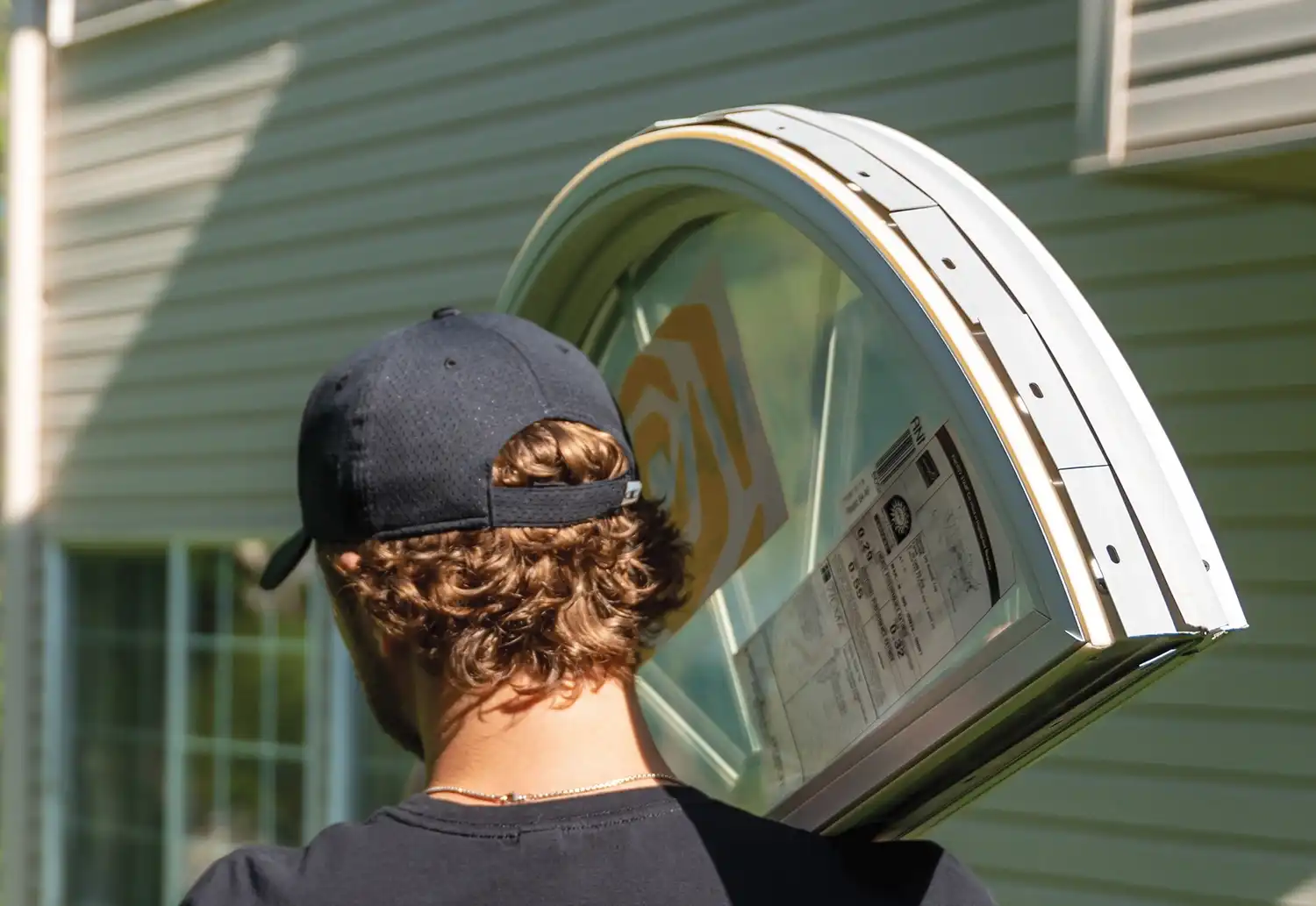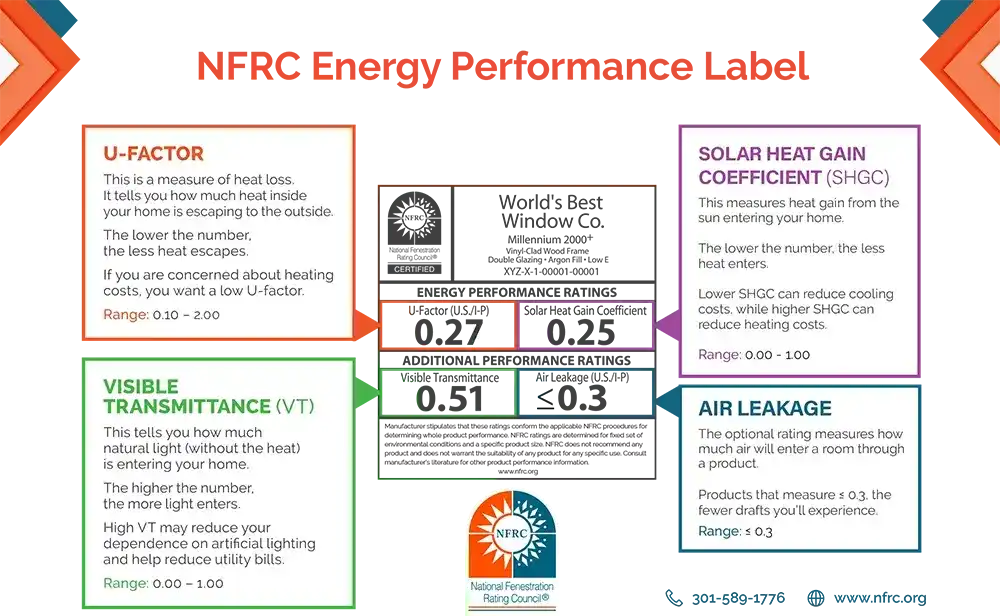
30 March 2023
How to Read a Window Label
If you’ve looked at a window label you’ve seen a flurry of numbers and abbreviations. Knowing how to read a National Fenestration Rating Council (NFRC) label helps you buy the right window for your home.
What is a Window Label?
A window label gets placed on a window to identify important things, like a window’s air leakage number, its solar heat gain coefficient, and other information. The labels come from the NFRC and help you find the best windows for your home. Different climates need windows with different values to help provide energy efficiency.

What is on a Window Label?
A window label includes: a product description, U-factor, Solar Heat Gain Coefficient, Visible Transmittance, Air Leakage, Condensation Resistance, and certifications. The label lists the window company’s name at the top and a description of the product below. The NFRC sticker includes four kinds of ratings based on data from third-party labs.
Product Description
The NFRC label lists the manufacturer’s name at the top, the product line, and the specific kind of window, like an awning or double hung window. The description also includes the product number, type of glass coating, gas fill, and other information.
U-Factor
A window or door’s U-factor measures how well it can prevent heat from leaving a room. Products that keep heat in the best have lower U-factor numbers. U-factors typically range between 0.20 and 1.20. The U-factor you want for your windows will vary based on your climate.
Solar Heat Gain Coefficient
A window’s Solar Heat Gain Coefficient (SHGC) measures a window’s ability to resist unwanted heat gain. A window’s ability to reject solar heat can help in warmer months and in warmer climates to help keep a home cooler. SHGC numbers range between 0 and 1 and you typically want a lower number. Numbers appear as decimals.
Visible Transmittance
Visible transmittance refers to a window’s ability to light a home with daylight. Visible transmittance numbers can range between 0 and 1 and appear as a decimal. They�’re useful when trying to find ways to add more natural light to your home. Windows with higher visible transmittance numbers will allow more natural light in.
Air Leakage
Air leakage is an important number because it measures how much air can enter a room through a window or door. A lower air leakage number indicates fewer drafts can enter a room. Air leakage numbers are typically equal to or less than 0.3.
Condensation Resistance
Some manufacturers include a Condensation Resistance rating under the additional performance ratings on a NFRC label. Condensation Resistance ranges from 1 to 100. A higher number means a window has greater condensation resistance. Condensation Resistance is an optional rating for manufacturers to include on their window labels.
Certifications
A window label can also include certifications from other organizations, like the Window and Door Manufacturers Association (WDMA), the WDMA’s Hallmark Certification, and an ENERGY STAR® logo. The WDMA has established standards for windows and doors within the industry. The WDMA’s Hallmark Certification provides certification to air, water, structural, and impact performance standards that you can use in evaluating windows. An ENERGY STAR® logo indicates a window has met ENERGY STAR® energy efficiency standards.
Most Important Ratings for Windows
Your geography and climate play an important role in determining which ratings and features will matter most in your decision. If you live in a colder climate, you’ll want to pay close attention to a window’s U-factor, visible transmittance, and air leakage. Those ratings can impact your home’s energy usage.
If you live in a warmer climate, air leakage and solar heat gain coefficient will factor more. Air leakage matters because the lower the air leakage, the less you have to worry about warm air entering your home. A lower SHGC number suits warmer climates because it can reject incoming solar heat better and lower the reliance on the air conditioner to cool the room.
What Kind of Windows Do I Have in My House?
If you want to know what brand of window you have in your home already, you can look in the corners of the window for some identifiers. Windows usually have an etching that includes the window manufacturer name, glass manufacturer, glass certification, window manufacturer code/serial number, and the NFRC number.
Discover the Benefits of Marvin Replacement Windows
Each window sticker displays the ratings for that specific window. To learn more about the ratings and energy performance of Marvin Replacement windows, schedule a design consultation today!
Back to All Articles
You May Also Like

Why Energy Efficiency Matters
Energy efficiency is a term that gets tossed around frequently but what is energy efficiency and why does energy efficiency matter? Energy efficiency can mean doing different things around the house to prevent heat loss or limit the amount of heat that enters a home.
Learn Why Energy Efficiency Matters
When to Replace Your Windows
On installation day, our team of Marvin Replacement Certified Installers will arrive at your home to remove your old windows and install your new ones.
When to Replace Windows
Types of Window Glass
There are several types of window glass and options to choose. Learn how specific types of glass can benefit your home. Marvin Replacement can tailor glass options to fit your home the best.
Window Glass Types